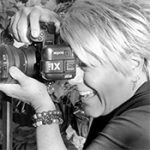Intro by Skip Cohen
Most of the time we’re sharing content here on the Marathon blog to help you with marketing and the business of photography, but every now and then I find a gem to share on technique.
In this post from Bob Coates he shares a terrific lesson in lighting, and regardless of whether you’re relatively new to photography or a seasoned veteran, it’s a great little refresher course.
Thinking back to the thousands of images, especially portraits, I’ve looked at in my career, the ones that left me speechless always involved the photographer’s ability to see the light, and often create it with additional lighting, the pose of the subject, the composition and exposure. Understanding lighting is one of the most important components of a solid skill set to build your business.
We’ve got no intention of trying to teach great lighting in the Marathon blog. This post from Bob is the perfect reminder of the importance of training yourself to see the light and notice the impact it has on the subject.
by Bob Coates“Turn your face toward me please.”
“Turn your face toward me please.”
I was talking to my friend Silvio from the back seat of the car. I had just noticed the rim light that was skimming one side of his face. I was shooting into the shadow side of his face AKA ‘short light’ which will tend to have more drama and slim down a person’s features. Here is what I saw…
It’s a great exercise to constantly be looking for lighting patterns in everyday lighting situations. Once you learn to recognize them it becomes A – easier to put people in the proper place when lighting in the field and B – to replicate the light in the studio because you have become more familiar with it.
In this particular case, the lens I was using also had the added benefit of very shallow depth of field. Which allowed the background to fall off quickly. This was the LEICA DG NOCTICRON 42.5/F1.2 on the Lumix GH4. 1/400 sec; f/1.4; ISO 800 Aperture Priority
A – Rim light that highlights the edge of the face
B – Shadow side of the face is the larger side meaning this is a short light portrait
C – Bit of a kicker light adds interest and more form
D – Focus fall off AKA Bokeh. Even though the ‘background’ is pretty close it goes quite soft
By the way, Silvio is a portrait photographer based in Scottsdale, Arizona you can check out his work here at Silvio Portrait Design.


















